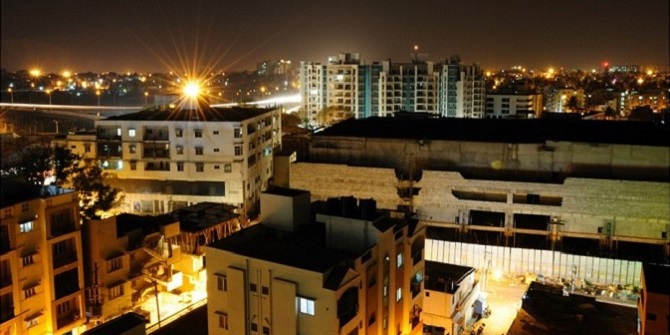The LSE India Summit 2016 featured an exhibition of rare documents from the archives of the Reserve Bank of India. During the conference, Sonali Campion spoke to Chief Archivist Dr R L Sahoo about the RBI’s collection and the process of curating the LSE exhibition.
RLS: I work as the Chief Archivist in the RBI Archives. I’ve come with my team to hold this exhibition at the London School of Economics India Summit. LSE approached us to have an exhibition of historical documents. The documents that we have brought here trace the origins of the Reserve Bank of India and tell the story of the RBI’s transition from a private shareholders bank to the national bank, as well as its role in currency management, the banking developments from 1935 until 1985, and the role of the regional bank furthering rural credit in India.
SC: So could you tell me more about the Reserve Bank of India archives?
The Reserve Bank established its central archives in 1981 at Pune. It is situated on the campus of the College of Agricultural Banking, one of the premier training colleges of the Reserve Bank. It is also not very far from our central office in Mumbai. The records start from the inception of the Reserve Bank in 1935. The records are in a continuous series and our departments transfer their permanent records – historical and legal – which are more than 12 years old. These records are open to research scholars, and also persons both within the bank and from outside organisations with an interest in the documents. So RBI archives provides resources for many who want to know about the Reserve Bank’s functioning.
So tell me about how this exhibition took shape?
We have been planning to do this exhibition since December and it was inaugurated by officials from the London School of Economics and Mr Sam Pitroda this morning. This exhibition features scanned images that give a glimpse of the range of documents that are available in the archives. We have a vast range resources in the form of files, registers, photographs and press clippings, so we want to tell people more about the organisation and encourage them make use of the resources. We have had many visitors to the exhibition asking questions about the RBI history. They feel very proud, because it is an important part of not just the financial history of India but its post-independence history.

Could you take two documents and tell me about them in detail?
One of the most important documents here is the letter from Jawaharlal Nehru in 1948 to the then-Governor of the RBI, Sir C. D. Deshmukh, seeking his suggestions for the deteriorating economic situation in the country, and how to address it. That document shows the correspondence exchanged between the top management of the Reserve Bank and the top officials of the Government. It is one of many documents which reflect the role of the RBI in the sphere of economic planning in the country.
Another document that I have brought here to the exhibition relates to how the system of rural credit developed with the establishment of the Reserve Bank and more specifically, the establishment of the Agricultural Credit Department.
This document comes from a series that also shed light on the central role of the RBI in setting up other institutions like Agricultural Refinance Corporation of India, the National Bank for Agriculture and Rural Development and their role in advancing credit to the agricultural sector.
Click here to find out more about the Reserve Bank of India Archives in Pune.
This post is an edited transcript of a recorded interview. Click here to listen to the podcast.
Note: This article gives the views of the author, and not the position of the South Asia @ LSE blog, nor of the London School of Economics. Please read our comments policy before posting.
About the Author
Dr R L Sahoo is Chief Archivist and Deputy General Manager of the Reserve Bank of India Archives.
Sonali Campion is Editor of South Asia @ LSE. She holds a BA (Hons) in History from the University of Oxford and completed her MSc in Comparative Politics at LSE.









